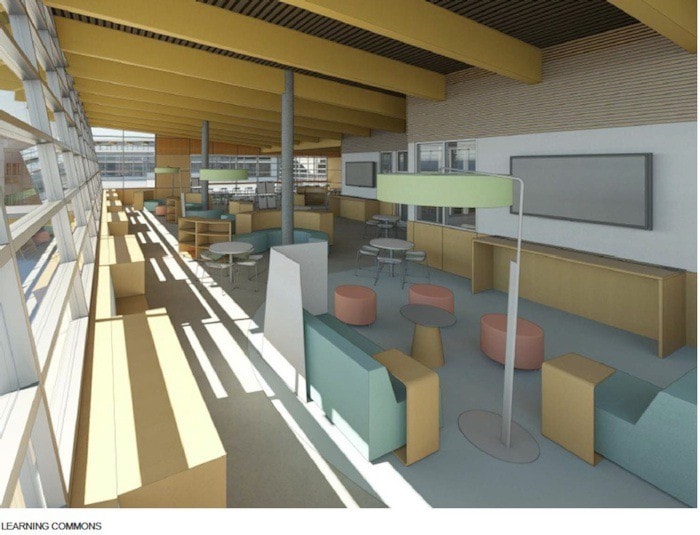A new high school destined for Cloverdale will be unlike any other in Surrey.
Work has started on a school site in the bustling Clayton neighbourhood of Surrey.
And while it’s a welcome addition in an area considered one of Surrey’s fastest-growing communities, where the existing high schools are busting at the seams, the new school will also prove a unique addition to the city.
Currently called Clayton North Secondary (a name will be chosen in the coming months), the $55-million school will be 16,685 square metres and feature an open, flexible design.
Many of the existing high schools in Surrey have a similar design – a cost saving measure taken in the past.
While they have some open space elements, the new school will take the concept further.
Clayton North will have about 10 “Learning Communities,” that will each function like combined classrooms that are assigned to different subject areas. For example, arts-related programs such as music and dance would be in one section, while sciences and shop courses would have their own areas.
The “communities” will be larger than typical classrooms, with walls that can be opened or closed to be as collaborative or private as needed.
“The design is more flexible and open so that while they have pods or areas that are designed to support certain parts of the curriculum, within them they can put up walls if they want to focus on different things, or open up the walls and work together,” explained Doug Strachan, communications manager for Surrey School District.
The school, with a capacity for 1,500 students, will also feature TED (Technology, Engineering and Design) labs, discovery labs, two gyms and learning commons with Makerspaces (hands-on, tinkering areas) and multi-purpose gathering spaces.
“The spark for it is really the new curriculum and the approach to big idea learning,” said Strachan of the new design, “so that you can go with something spontaneous and explore it and reconfigure the room to do that.”
While Clayton North’s design is brand new, it’s not a first for B.C. as a Vancouver school shares a similar, open concept.
Still, the Surrey School District saw the construction of its new high school, expected to open in fall 2018, as an opportunity to change how things are done.
“New secondary schools don’t come along very often,” said Strachan.
The last new high school built in Surrey was Panorama Ridge Secondary in 2006.
New school will mean boundary changes
With the start of construction on a new high school in Cloverdale come decisions about which students from what subdivisions and elementary schools will go there when it opens.
Clayton North Secondary, destined for a site on 184 Street near 73 Avenue, isn’t expected to be ready to open until fall 2018, but the Surrey School District is beginning the process of defining boundaries and catchment areas.
 The new high school will impact both Lord Tweedsmuir and Clayton Heights secondary schools, which are both over capacity. For example, student currently in LT’s catchment may be diverted to Clayton Heights, while some destined for Clayton Heights might be switched to the new school.
The new high school will impact both Lord Tweedsmuir and Clayton Heights secondary schools, which are both over capacity. For example, student currently in LT’s catchment may be diverted to Clayton Heights, while some destined for Clayton Heights might be switched to the new school.
The possible boundary changes could also have implications for the elementary schools nearby, in that children in those schools could feed into different high schools than they currently do.
Planning for the new school’s arrival is “complex,” says a memo to school trustees.
“The task needs to be approached with clarity and thoroughness,” the memo reads.
This month and next, the district plans look at the options, issues and challenges of the changes and hopes to post information and process on PlaceSpeak, an online discussion group.
In the months following, consultation will begin, through public meetings, as well as PlaceSpeak and that feedback will be shared. A report will be made public in June, with the board of education making a decision on the boundaries changes by November.
- with files from Lauren Collins
